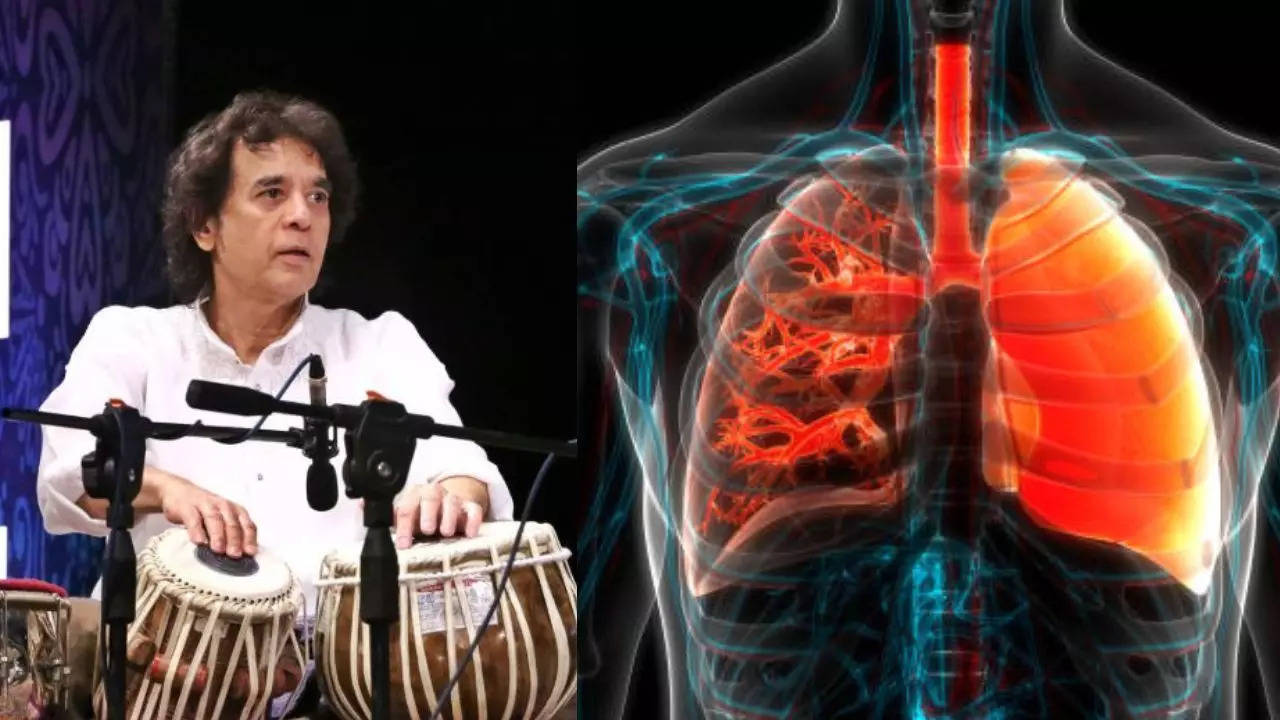Contents
-
news
-
Health
Idiopathic Pulmonary Fibrosis What caused Ustad Zakir Hussain’s death?
Ustad Zakir Hussain passed away due to complications of idiopathic pulmonary fibrosis. The lung disease, which occurs when lung tissue becomes damaged and leads to scarring, has been confirmed in a US hospital. The 73-year-old tabla player was in the hospital for almost two weeks due to thick, hardened tissues in his lungs, making it difficult for him to breathe properly. Read on to find out what causes this life-threatening condition.

Hussain was hospitalized for about two weeks and later moved to intensive care as his health deteriorated.
Tabla player Ustad Zakir Hussain He died at a San Francisco hospital on Monday, his family confirmed. The 73-year-old man had been battling health issues, and according to his family, he died due to complications from idiopathic pulmonary fibrosis – a lung disease.
Hussain was hospitalized for about two weeks and later moved into intensive care as his health deteriorated.
“His brilliant work as a teacher, mentor and teacher has left an indelible mark on countless musicians. He was hoped to inspire the next generation to move forward. He was a cultural ambassador and one of the greatest musicians of all time. Has left a unique legacy as one of the Hussain’s family said in a statement.
What is Idiopathic Pulmonary Fibrosis?,
According to experts, idiopathic pulmonary fibrosis is a group of serious lung diseases that affect the respiratory system. Pulmonary fibrosis scars and thickens the lung tissue, affecting the connective tissue in the lungs and the alveoli – the air sacs inside the lungs.
Doctors say that the lung damage of people suffering from this life-threatening condition gradually gets worse with time. Stiff, stiff lung tissue can’t expand as much as they should, making it difficult to breathe and causing shortness of breath even while performing routine tasks that never seemed tiring before.
Health care providers consider Pulmonary fibrosis is an incurable disease and a progressive disease that gets worse over time because there is no cure, and eventually leads to death. Although medications and treatments can sometimes help slow the rate of fibrosis, reduce symptoms, and improve quality of life, lung transplantation can be a life-saving option.
Signs and symptoms of pulmonary fibrosis
Doctors say the symptoms of pulmonary fibrosis can vary greatly from person to person. While some people become seriously ill very quickly, others have moderate symptoms that gradually worsen over months or years. Some of these are:
- shortness of breath and shortness of breath
- dry cough
- extreme fatigue and tiredness
- unexpected weight loss
- pain in muscles and joints
- Widening and rounding of the ends of the fingers or toes – also known as clubbing
Who is more likely to get pulmonary fibrosis?
According to doctors, there are several risk factors, such as smoking, that increase your chances of developing pulmonary fibrosis. But having one or more risk factors does not mean that you will definitely get the disease one day.
Other risk factors for pulmonary fibrosis include:
old age
Most people who have pulmonary fibrosis develop it in the second half of life, between the ages of 50 and 70.
being a biological male
Pulmonary fibrosis affects men more than women. However, its cases among women have increased in recent years.
smoking
Smoking cigarettes increases the risk of pulmonary fibrosis.
working around dust or smoke
Regularly breathing in chemicals or hazardous substances can cause damage to the lungs. Farmers, cattle herders, barbers, stone cutters/polishers and metal workers may be at increased risk.
other medical conditions
In some cases, another medical condition such as an autoimmune disease, rheumatoid arthritis, or viral infection causes pulmonary fibrosis.
other factors
Radiation exposure, such as radiation therapy to treat cancer, can damage lung tissue.
Get the latest news live on Times Now with breaking news and top headlines from around the world.


